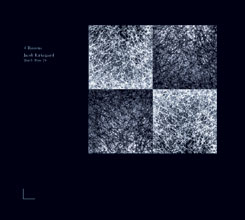 A man of extremes, Kirkegaard’s last Touch record was noisescapes recorded in the Earth’s crust. Four Rooms is a record of silent feedback, silence played back into more silence, in four rooms in Chernobyl, Ukraine.
A man of extremes, Kirkegaard’s last Touch record was noisescapes recorded in the Earth’s crust. Four Rooms is a record of silent feedback, silence played back into more silence, in four rooms in Chernobyl, Ukraine.
Radiant silence would be a better description, and Kirkegaard uses the city’s past to explode his paradox by choosing rooms of defined public space: church, auditorium, swimming pool, gymnasium. Rooms rarely silent in their previous life and deathly silent today are given second stories, necessarily suggestive of the noise and chaos of their tragedy but themselves eerily hopeful impossibilities.
Kirkegaard's method will immediately recall Lucier’s I Am Sitting In A Room, though now with the sound of empty space replacing the human-voice within-space. Lucier’s fusion of human presence with spatial sound dynamics—a process that subtracts the tonal uncommonalities—contrasts Kirkegaard’s additive method in which recordings of the empty rooms are layered sometimes 10-high upon each other, equaling squirmy, resonant pools of all-over ambient noise-throb. Whereas Lucier’s work ends in a shimmering dissolve, a Zen conclusion (the artist never endorsed) on both the power and ultimate dependence of human consciousness/presence, Four Rooms takes the ghostly memory of presence and exploits it in a meditation on what history leaves behind or what is always there: the before and after.
At face value the four tracks are extremely effective, immersive ambient pieces, at once calming and sleepy and shrill with the buried howl and throb of frequency pile-up. Album art translates the lacey threads and cold currents that wind and curl over the constant, in-the-red groan of a silence room bursting with itself. To call the music desolate or space-like (how could you resist) is accurate, but knowledge of its genesis makes its experience a confined, earthen thing, creepy given the spaces, but comforting and womblike almost by fact of its existence. On his website, Kirkegaard has incredible pictures of the specific rooms, from the “Zone of Alienation,” looking completely alien, untouched for 20 years, holding back some awesome silence.
samples:
Read More

